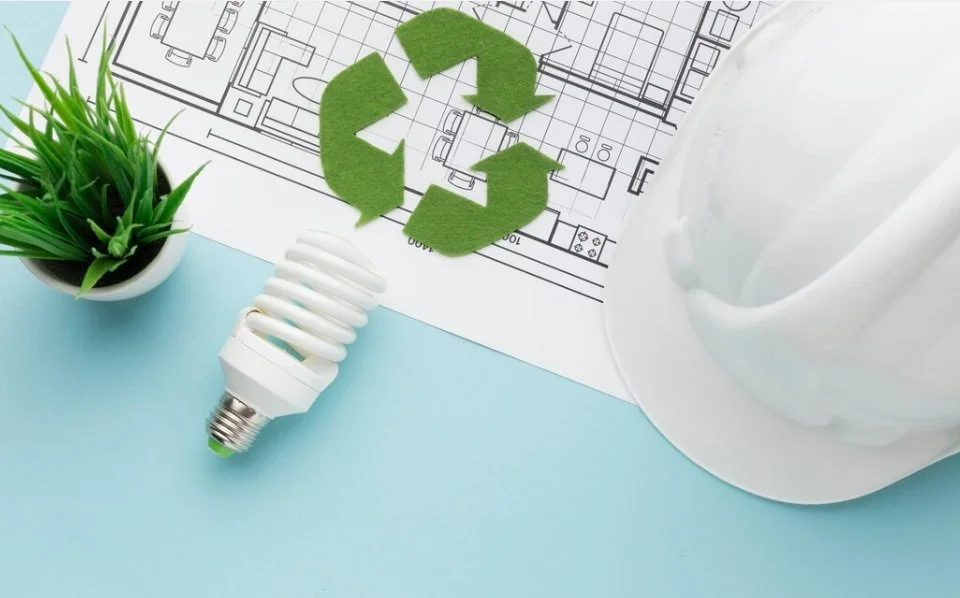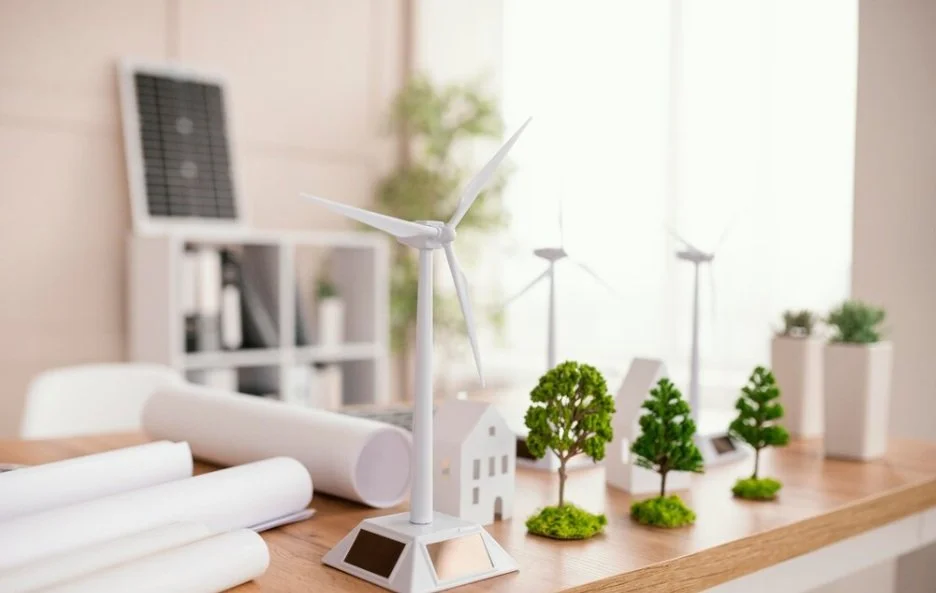Sustainable Construction Practices: Building for the Future
Sustainable construction practices have become a cornerstone of modern building techniques, as the industry moves toward reducing environmental impact, enhancing energy efficiency, and promoting long-term sustainability. In an era where climate change and environmental degradation are pressing global concerns, the construction industry must take an active role in mitigating its impact. Sustainable construction is not just about building with eco-friendly materials, but also about adopting strategies that reduce energy consumption, optimize resources, and design for longevity.
These practices aim to minimize waste, reduce carbon footprints, and use renewable resources while creating functional, high-quality structures that meet both current and future needs. The shift towards sustainable building methods is driven by the need to reduce environmental degradation, conserve natural resources, and create healthier living and working spaces for communities. It emphasizes efficiency in every phase of a construction project—from design and materials selection to construction and eventual demolition or repurposing.
Incorporating sustainable construction practices also requires a holistic approach. It is not solely about reducing the environmental impact during the construction phase but also about considering the lifecycle of a building. This includes the energy use during operation, the ability to recycle materials at the end of the building's life, and how the structure integrates with the natural environment. Sustainable buildings are designed to have a minimal negative impact while enhancing the well-being of those who use them.
This article explores the importance of sustainable construction, key principles, methods, and materials that contribute to reducing the ecological footprint of construction projects. By prioritizing energy efficiency, renewable materials, and reducing waste, sustainable construction practices are not only beneficial for the environment but also offer economic advantages in terms of long-term cost savings and the creation of durable, low-maintenance buildings. Furthermore, the economic impact of these practices extends beyond the building itself, stimulating green industries, creating jobs, and fostering a shift toward sustainable economies.
Ultimately, sustainable construction is not just a trend but a necessary paradigm shift. As demand grows for buildings that contribute positively to the environment and society, the adoption of green building practices will become the norm. This transformation is vital not only for reducing the environmental impact of construction but also for promoting a future where our built environment aligns with the principles of sustainability, helping to ensure a balanced coexistence with the planet for generations to come.
The Importance of Sustainable Construction
The global construction industry is responsible for a significant portion of environmental degradation, including resource depletion, energy consumption, and waste production. As climate change and environmental degradation continue to threaten our planet, sustainable construction practices offer a way to mitigate these impacts. By focusing on energy efficiency, waste reduction, and using eco-friendly materials, the construction industry can contribute to a healthier planet and a more sustainable future.
Key Principles of Sustainable Construction
Sustainable construction is based on several key principles that guide builders and designers in creating eco-friendly, energy-efficient, and socially responsible buildings:
Energy Efficiency: Ensuring that buildings consume less energy by using energy-efficient designs, technologies, and materials. This can involve passive design elements like natural lighting, insulation, and the use of energy-efficient HVAC systems.
Use of Renewable Resources: Incorporating renewable and locally sourced materials such as bamboo, recycled metals, and sustainable timber. These materials are not only eco-friendly but also reduce the reliance on non-renewable resources.
Waste Reduction: Minimizing construction waste through efficient design, on-site waste management, and the use of recycled materials. Additionally, designing for deconstruction—so that materials can be reused or recycled at the end of a building's life—helps reduce landfill waste.
Water Conservation: Implementing water-saving technologies like low-flow plumbing fixtures, rainwater harvesting systems, and drought-resistant landscaping. Sustainable buildings often include systems designed to reduce water consumption and manage stormwater effectively.
Indoor Environmental Quality: Ensuring the health and well-being of building occupants by using non-toxic materials, proper ventilation, and natural light. Sustainable buildings aim to improve the indoor air quality, reduce allergens, and create comfortable, productive spaces.
Sustainable Building Materials
The materials used in sustainable construction are critical in reducing the environmental impact of buildings. Some of the most commonly used sustainable materials include:
Recycled Materials: Recycled steel, glass, and concrete are some of the most commonly used materials in sustainable buildings. Using recycled content reduces the need for raw material extraction, which can significantly cut down on energy use and carbon emissions.
Bamboo: Known for its rapid growth and low environmental impact, bamboo is used as a sustainable alternative to traditional timber. It can be used for flooring, paneling, and structural elements.
Straw Bales: A natural, renewable material that is used as insulation in sustainable homes, straw bales are highly energy-efficient and have low environmental impact.
Hempcrete: Made from hemp fibers, lime, and water, hempcrete is a highly sustainable building material that provides insulation and is carbon-neutral. It’s also resistant to mold and pests.
Reclaimed Wood: Using reclaimed wood from old barns, warehouses, and other structures helps to reduce deforestation and can add a unique aesthetic to buildings.
Energy-Efficient Construction Techniques
Energy-efficient construction practices aim to minimize the energy consumption of buildings throughout their lifespan. Some of the most effective techniques include:
Passive Solar Design: This involves designing buildings to take advantage of natural sunlight for heating, cooling, and lighting. By placing windows strategically and using thermal mass materials, buildings can reduce their reliance on artificial heating and cooling.
High-Performance Insulation: Proper insulation is essential for reducing energy consumption. Insulating walls, roofs, and floors with high-performance materials helps to keep heat inside during the winter and outside during the summer.
Smart Technologies: Integrating smart home technologies such as programmable thermostats, lighting systems, and energy-monitoring devices can optimize energy use and reduce waste.
Green Roofs and Walls: These are plants installed on rooftops and exterior walls to provide insulation, reduce the urban heat island effect, and manage stormwater. Green roofs also contribute to improved air quality and aesthetic value.
Renewable Energy Systems: Incorporating solar panels, wind turbines, or geothermal systems can drastically reduce a building's energy consumption by generating renewable energy on-site.
Certification Systems for Sustainable Buildings
Various green building certification systems have been developed to ensure that buildings meet specific sustainability criteria. Some of the most recognized systems include:
LEED (Leadership in Energy and Environmental Design): This certification system rewards buildings for incorporating sustainable practices in energy efficiency, water conservation, indoor air quality, and the use of eco-friendly materials.
BREEAM (Building Research Establishment Environmental Assessment Method): Originating in the UK, BREEAM is an environmental rating system that assesses the sustainability of buildings throughout their lifecycle, from design to operation.
WELL Building Standard: This system focuses on human health and well-being, emphasizing factors such as air quality, water, nutrition, and mental health within the built environment.
The Benefits of Sustainable Construction
Sustainable construction practices offer numerous benefits for the environment, the economy, and society:
Environmental Impact: Sustainable buildings reduce carbon footprints, conserve natural resources, and minimize waste. They help to combat climate change by lowering greenhouse gas emissions and promoting renewable energy use.
Cost Savings: While sustainable buildings may require a higher initial investment, they often lead to significant savings in the long term. Energy-efficient buildings reduce utility costs, and well-designed buildings typically have lower maintenance costs.
Health and Well-being: Sustainable construction prioritizes indoor air quality, lighting, and materials that promote health. Occupants of these buildings experience improved physical and mental health due to better air quality and access to natural light.
Increased Property Value: Green buildings are increasingly sought after, and many buyers are willing to pay a premium for energy-efficient, environmentally friendly homes and offices.
Compliance with Regulations: As governments and local authorities continue to enforce stricter building codes and sustainability regulations, adopting sustainable practices ensures compliance and helps future-proof buildings against evolving standards.
Conclusion
Sustainable construction is no longer a niche approach—it is rapidly becoming the standard for the future of the building industry. By implementing energy-efficient techniques, using sustainable materials, and focusing on environmental and social responsibility, the construction industry can play a pivotal role in addressing global environmental challenges. As technology advances and sustainable practices become more affordable, the shift toward green construction will continue to grow, shaping a more sustainable, eco-friendly built environment for generations to come.


